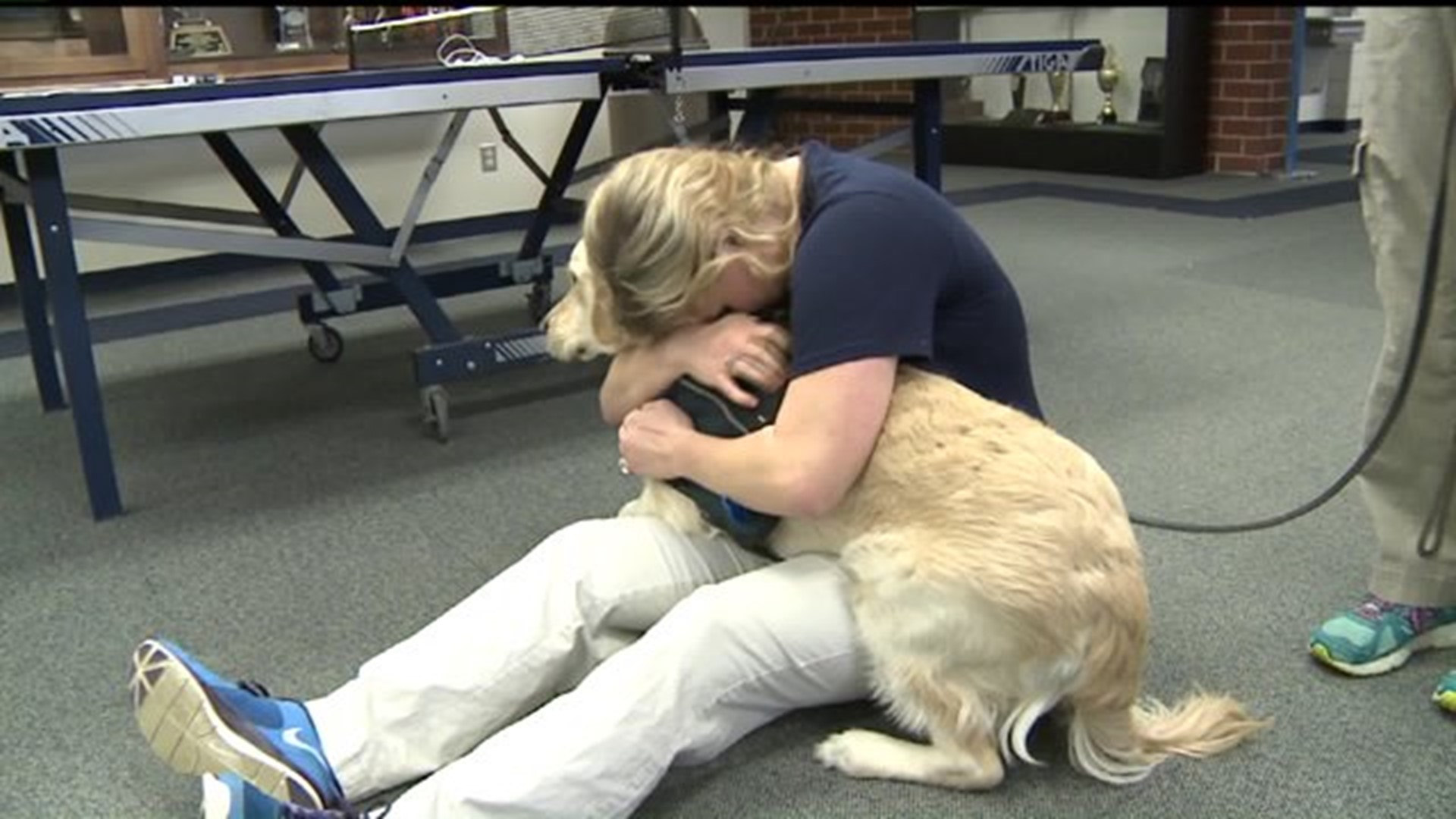A story that News 8 reported about a local veteran and the challenges he faced when he tried to bring his Emotional Support Dog inside an area restaurant generated a large response, with many viewers questioning the difference between Emotional Support Animals and Service Animals.
To answer those questions, News 8 met up with Hillary Plog, President and Head Trainer at the Quad Cities Canine Assistance Network (QC CAN), to explain the different training methods and laws for Service Animals and Emotional Support Animals.
"Service Dogs, as defined by the 'Americans With Disabilities Act,' are individually trained to perform work, or tasks, that are directly related to that person's disability. That work, or those tasks, have to directly mitigate that disability," Plog said. "So for instance, in the case that someone has PTSD, the dog could perform deep pressure therapy during an anxiety attack, or the person could do a 'cover me' command, which creates a barrier between the person and a crowded room."
Along with calming their owner down and creating a barrier between the owner and other people, Plog said QC CAN also trains their dogs to turn on the lights, in case their owner is afraid of the dark, and retrieving the owner's medicine if they are having an anxiety attack.
However, an Emotional Support Animal (ESA) is something totally different.
"Emotional Support Animals do not undergo any specific task training, or training for them to be able to do any specific work directly related to the person's disability, other than just providing comfort for them in the instance that they have a mental, or an emotional, or a psychiatric disability," Plog said.
Unlike Service Animals, anyone can go online and order a certificate that says their pet is an ESA.
Also, ESA's are not covered under the Americans with Disabilities Act, which is why most businesses can legally deny them access to their property.
The only general public areas ESA's are allowed in are airplanes and certain housing situations, such as rental facilities that don't allow pets. In both of those situations, the airline or the landlord is allowed to ask for the ESA owner's doctor's note who prescribed them the animal as a form of treatment.
As for Service Animals, they can go wherever the general public is allowed access.
Service Animal owners do not have to provide any paperwork to a business, but the business is limited to two specific questions. They can ask if the Service Animal is required because of a disability, and they can ask which services the animal is trained to provide.
Plog said that while ESA's may not provide the same types of services Service Animals provide, they can still be a vital form of therapy for people with psychiatric disabilities. She said ESA's are important for people who have disabilities that don't necessarily need or warrant a service animal.
"I don't think ESA's are dangerous to the validity of Service Dogs," Plog said. "What I think is dangerous are people who are uneducated, our society is uneducated. The more people we educate, the more that businesses and people with disabilities know what the differences are between the dogs, then we can use them in the correct way."

